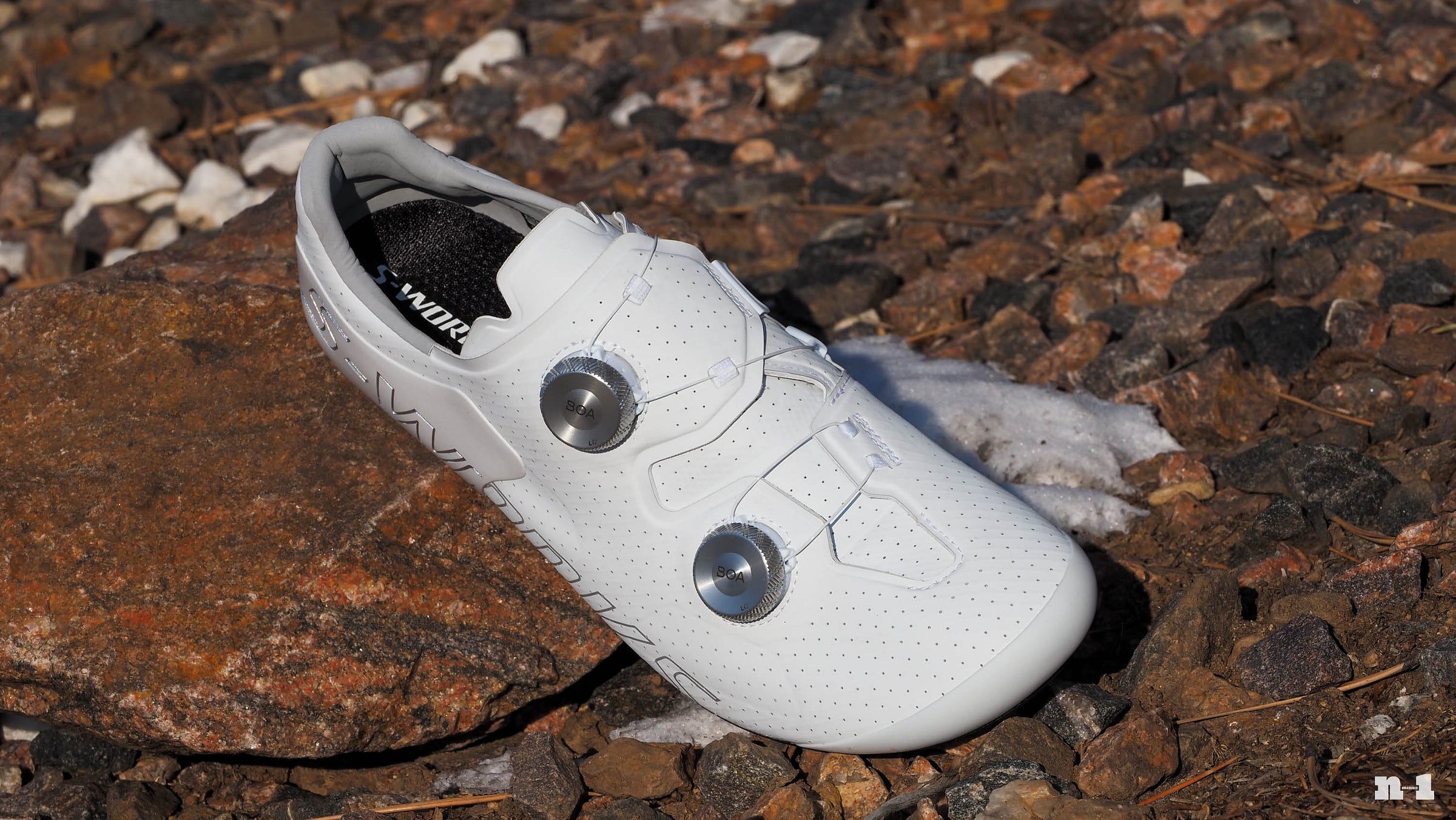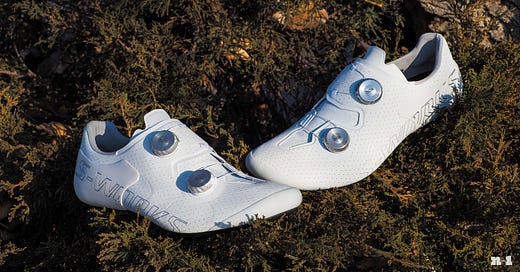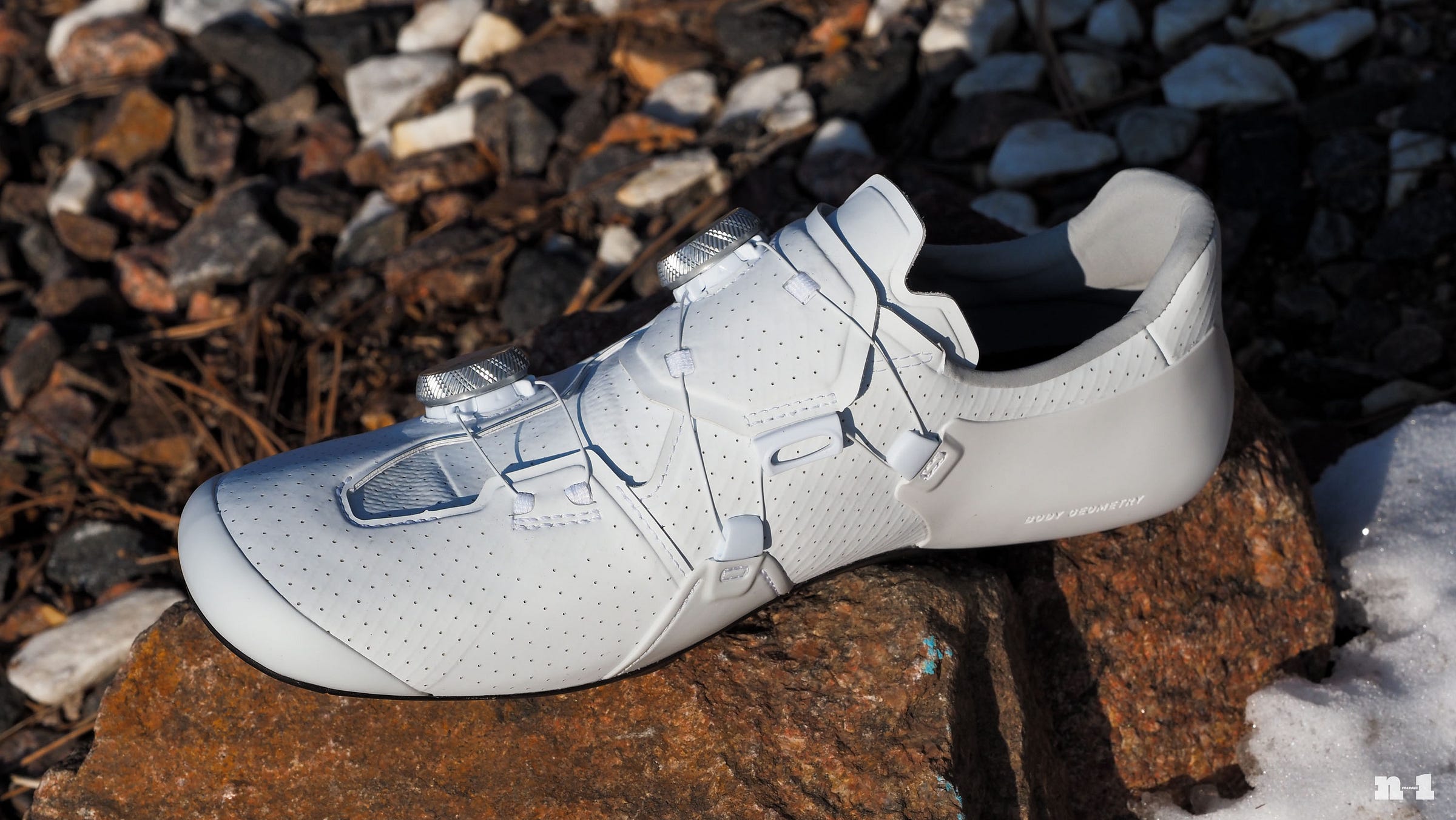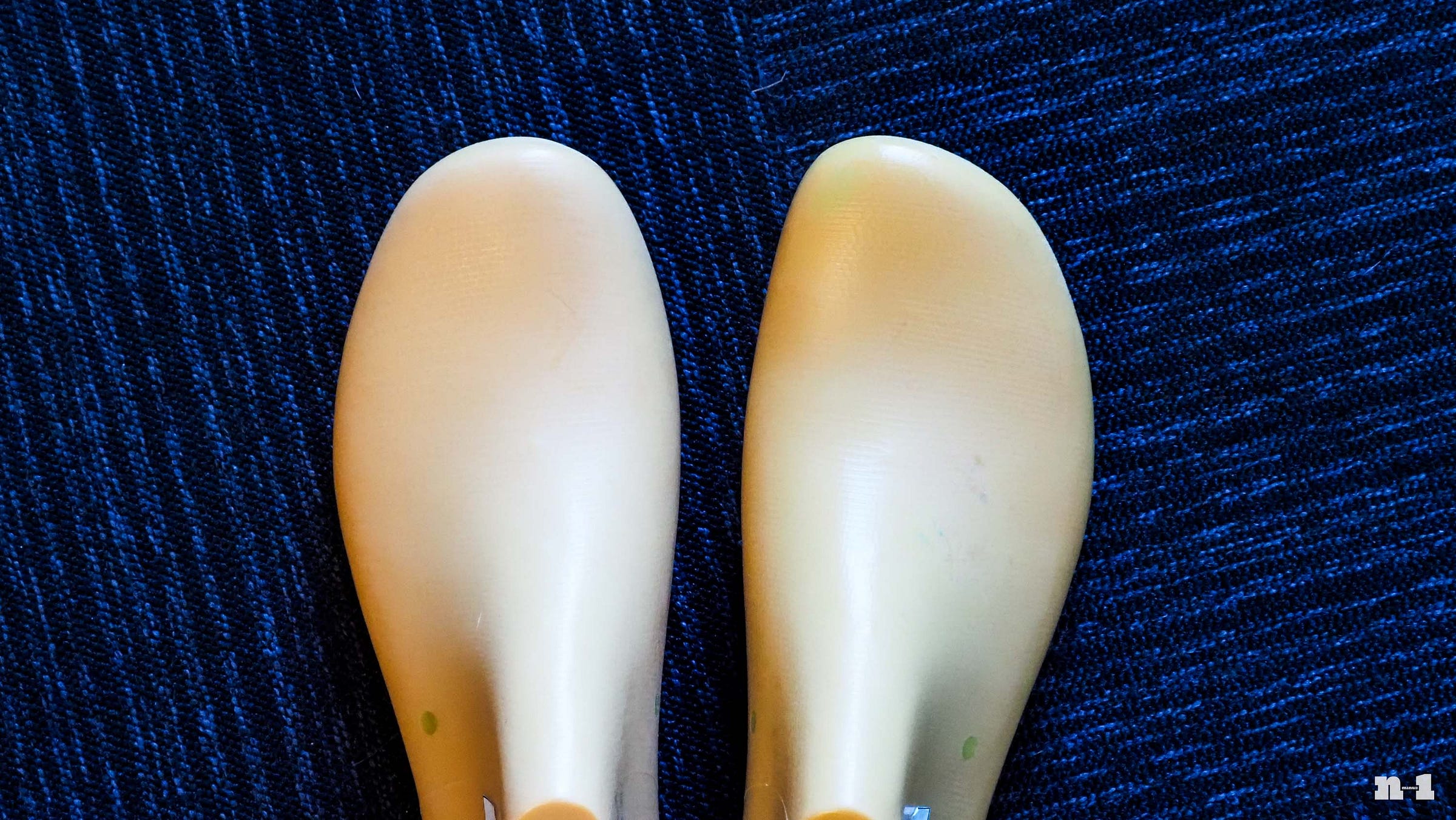Specialized S-Works Ares 2 shoe review: A mainstream (r)evolution in width and shape
It offers even better performance than the original, but the big story is where Specialized will take the new shape from here.
Specialized has today announced the second generation of its S-Works Ares road shoe. Billed as “the ultimate shoe for racers”, the new S-Works Ares 2 is comfier, more normal-looking, even more secure, and certainly easier to keep clean than the original one – and after almost two months of testing a pair myself, I’d argue that all of those claims hold true.
However, I’d also argue that an even bigger deal on the S-Works Ares 2 is the wider, more squared-off, and generally more ergonomic forefoot shape, and in particular, the prospect that Specialized will eventually roll this change out across much of the rest of its footwear range, too.
Big and little changes alike
Specialized may not have explicitly marketed the first-generation S-Works Ares as being only for sprinters, but that’s nevertheless the group that seemed most drawn to them given the primary goal was an ultra-secure hold for efficient power transfer during intense efforts. That came about largely via the unusually broad and triangular main strap coupled with clever Boa lacing patterns and dial mounting locations that did a great job of pulling the heel into the back of the shoe without creating undue pressure. Up front, broad overlapping wraparound forefoot straps did the same around the ball of the foot.

The original Ares largely succeeded in terms of how stoutly it enveloped a rider’s foot, and yet it was also surprisingly comfortable. Even so, it fell short in other ways.
The stretch knit liner made it challenging to get the shoes on and off, and particularly in the lighter color options, it was nearly impossible to keep clean. All of that overlapping material wasn’t great for ventilation in hot weather, either, and while the unusual closure configurations were highly effective, the Ares was also a little awkward-looking. And as good as the hold was, under especially intense efforts, the shoes still allowed your feet to roll inward a little more than some riders preferred.
“The sock getting dirty and staying dirty is a huge deal,” Specialized senior footwear developer Ashley Sult told me during a visit to the company’s office in Louisville, Colorado. “And it’s not just because of visuals; it also aged the shoe really fast. People want to keep shoes for years, and pros want to keep shoes for months at least. There are some pros who legitimately try to wear the same pair of shoes all year, and seeing an Ares at the end of the year after a rider’s been riding it all year… as a product person, it’s really rough. I also think we didn’t quite nail what we wanted with the heel hold. Some people really struggled with it a little bit.”
Sult and the rest of Specialized’s footwear development team went back to work shortly after Ares launched, and the second-generation Ares 2 looks very different despite it having similar functional goals.
First and foremost, the stretch knit sockliner has given way to a more traditional arrangement with a separate tongue and multi-layer laminate upper materials that are much easier to keep clean.
Specialized has carried over the way the main strap pulls your heel into the back of the shoe, but there’s now an especially robust external heel counter that extends much further forward than the old shoe, particularly on the medial (inboard) side. Both sides of the heel counter also sport tabbed extensions that curl inward slightly around the front of the ankle to create a sort of plastic cage around the base of your foot.
Up front, the overlapping Y-shaped straps have given way to a more conventional-looking closure that nevertheless promises the same security as the old Ares. Similar to the S-Works Torch, the Ares 2 foregoes the use of fancy Dyneema non-stretch fibers, but the upper material is still made of up to six different layers of material laminated together. Some areas of the upper use all six for support, while other areas that are more critical for comfort omit some layers for more stretchiness and pliability. That stretch is particularly notable around the first and fifth metatarsal heads where many riders (myself included) can often experience irritation.
Of course, Specialized has stuck with Boa dial-type closures for the S-Works Ares 2, but they’ve been relocated a little further down the side of the shoe. The plastic knobs of the old shoe have also been upgraded to machined aluminum ones, which not only look (and feel) more premium, but offer better grip in your fingers thanks to the more aggressive texture.
Also carrying over are Specialized’s usual array of Body Geometry footwear features, including the varus forefoot wedge, arch support built directly into the plate, and a little bump in the footbed that’s intended to keep your metatarsals from collapsing under load. Those features admittedly don’t work for everyone, but they do seem to suit the meat of the bell curve (myself included).
As you’d expect, all of this is mounted atop a thin carbon fiber plate with three-bolt inserts that offer 5 mm of fore-aft adjustment in addition to whatever you can get out of the cleats themselves.
“[Ares 2 is for] people trying to go as fast as they can on their bike,” Specialized footwear category director Nick Gosseen told me. “We want people who like a really structured feel around their foot.”
The more conventional layout makes the S-Works Ares 2 less weird-looking than the original Ares, too. In fact, the second-generation shoe is downright elegant-looking in my opinion, and many folks might even have a hard time telling the Ares 2 apart from Specialized’s S-Works Torch all-rounder at first glance.

It’s a bit tougher to hide all that additional structure on the scale. Whereas the Specialized S-Works Torch comes in at 462 g for a pair of size 43 shoes (actual weight), the new S-Works Ares 2 is a fair bit heavier at 510 g – almost identical to the original Ares, and at least on my test pair, about 15 g lighter than claimed.
All of these changes by themselves would already make the Ares 2 a worthy successor. But while all of these updates are positive ones, the one that really has me excited is the revamped toe box shape.
“There are going to be a lot of folks that liked the Torch that will like this more, and part of that is the last shape,” Gosseen said. “It’s a really big departure.”
Keep reading with a 7-day free trial
Subscribe to n-1 to keep reading this post and get 7 days of free access to the full post archives.









